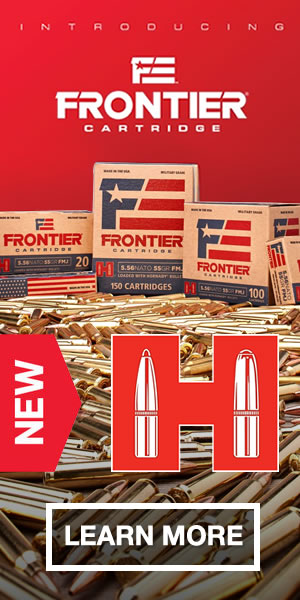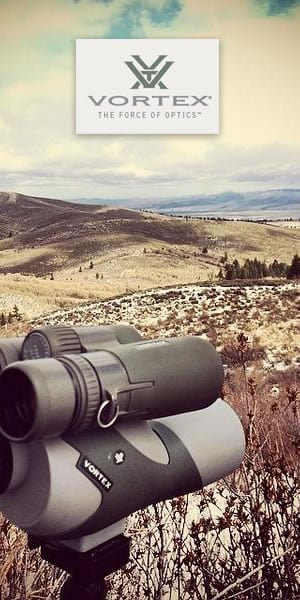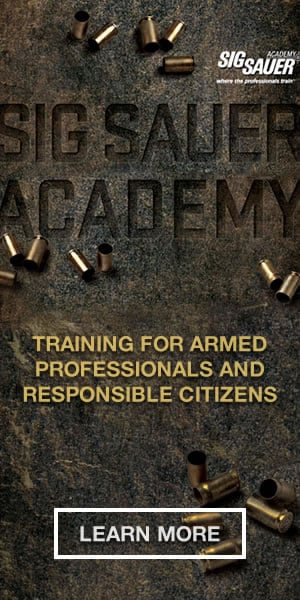There is something I've learned by working with hundreds of people--law enforcement officers, police academy cadets, and civilians-as a certified police firearms instructor for the past 32 years. Are you ready for it? Not all shooters are created equal.
Earth-shattering right? Well, yes and no. A lot of manufacturers don't recognize that fact-and build their products-rifles, shotguns and handguns-for the "average shooter". This is not a criticism, just a fact. Products need to be built to meet the needs of the greatest amount of end users, but accommodations certainly can help.
The problem is that there are a lot of shooters who do not have adequate hand strength to safely operate the majority of semi-automatic defensive handguns currently on the market-whether the lack of hand strength is caused by infirmity, illness, stature, or physical disability.
Safe operation more than being able to pull the trigger and hit the target. Safe operation means being able to load and unload the magazine, insert the magazine and chamber a round, safely clear a live round from the chamber, and field strip and maintain the handgun after shooting without assistance from anyone else.
Slide manipulation is one of the most difficult-and critical-of all operational tasks. Over the years I have had a few police cadets and many civilian users have problems with fully retracting a pistol slide. This is unacceptable, and also the reason why I have traditionally recommended revolvers for individuals with hand strength issues. No shooter I have worked with has had a problem with opening and closing a revolver cylinder-although the trigger has been an issue.
Slide manipulation issues for people with inadequate hand strength present themselves regards of the size of the handgun in question. In fact, some of the most difficult pistol slides to manipulate are those on micro sized semi-automatic pistols. Since the slide is so small, it is hard to get a solid grip on it retract it.
Hard recoiling calibers (too many new shooters think that nothing else but the sharp recoiling .40 S&W will do) also present their own set of issues involving controllability between shots, making accurate shooting a difficult proposition indeed.
Smith and Wesson has finally solved (yes, solved) these issues in a big way, bigger than any other manufacturer I have ever seen, and NONE of what they are saying about the new M&P .380 Shield EZ is hype.
The .380 Shield EZ is basically a slightly scaled down M&P (although it is called a Shield), chambered for the low recoiling, but still quite effective, .380 ACP (Automatic Colt Pistol) cartridge. Good choice right from the get go. Although looked down at by some as not being powerful enough, the mild mannered .380 is still considered by nearly all knowledgeable shooters to deliver the minimum acceptable level of defensive handgun cartridge power. Yes, the 9mm is significantly more powerful, but it also recoils significantly more and produces more muzzle flash than the .380.
The .380 EZ is quite a bit larger than the current crop of .380's which helps fulfill Smith and Wesson's design goals. The EZ looks like a proportionally reduced, full size M&P. I can tell you from working the retail side of Vance Outdoors that many folks who purchased micro .380's regardless of brand, were surprised about how much they "barked" when fired. The micro pistols are so small and so light that that even the .380 can be uncomfortable to shoot after a while. The .380 EZ is small enough for concealment (everywhere but on the ankle) but large enough to be enjoyable to shoot-a lot!
The polymer framed .380 EZ makes a couple of major departures from the standard M&P Shield operating system-the most noticeable of which is via the use of a grip safety at the rear of the frame. I believe this is a great addition to the gun.
Grip safeties have been around since the Colt M1903 pistol debuted, and is most commonly encountered on the legendary Colt M1911 type pistol. A grip safety keeps the pistol from firing until it is held firmly-which it automatically disengages it. There is nothing to think about or do other than hold the pistol in a shooting grip. And by relaxing your grip a bit, you can allow the grip safety to re-engage if desired without losing control of the pistol.
The other departure from the standard M&P operating system is the elimination of the articulating safety trigger-which explains why Smith and Wesson opted for the grip safety. This change gives the EZ the smoothest trigger possible. By eliminating the safety mechanism, the EZ trigger functions in the single action mode for increased crispness of operation-it is no longer involved in disengaging the safety and only releases the striker. If you want an additional safety mechanism added, you can get the optional ambidextrous manual safety, which makes that version of the EZ much like an "understudy" of the 1911.
I tested the .380 EZ Shield without manual safety at the Vance Outdoors Obetz Shooting Range. My sample was one of the rental guns. It was during the shooting test that I verified that this new Smith and Wesson delivered what was promised-in spades.
When I removed the magazine from the test gun for loading I noticed the attention that was paid to insuring easy magazine loading-and this is no small thing. In a recent test I did of a Performance Center 9mm Shield, I was unable to load the magazines to full capacity, having to short each magazine by one round. The first thing I noticed about the EZ magazine was the addition of a loading stud at the base of the follower-similar to what you find on magazines for .22's. This allows you to pull the follower down as you insert rounds on top. Nice touch! But I found that I didn't need this the loading stud. The rounds all loaded easily one on top of the other. I don't how Smith managed this while maintaining feeding reliability, but I have never handled an easier loading centerfire magazine!
Once I had loaded the 8 round magazine, I inserted it and racked the slide, instantly realizing that the other main claim of the EZ was 100% accurate-the slide glided back easily and when released, smoothly chambered the first round. This was likely the easiest to rack centerfire handgun slide I have ever operated.
I tested fired the EZ with American Eagle 95 grain FMJ ammunition. The trigger was very crisp, which helped keep all shots at 21 feet in groups at three inches or less-without much concentration! The three dot sights were perfectly regulated and all shots landed to the point of aim. Sighting is aided by the 3.6 inch barrel. Recoil was almost non-existent, making this one of the most enjoyable to shoot defensive handguns I've fired in some time. You clearly want to shoot it until all the ammo runs out-and of course operation was flawless.
Like full size M&P pistols, the Shield EZ is long enough to allow the addition of a Picatinny rail for lights or lasers, making this an excellent home defense pistol as well.
Smith and Wesson really has a winner on its hands-a pistol for those who might have been precluded from choosing an autoloader for self-defense. Now they have an autoloader that nearly everyone can safely handle and enjoyably shoot. And I would say to Smith and Wesson-"Mission Accomplished".


